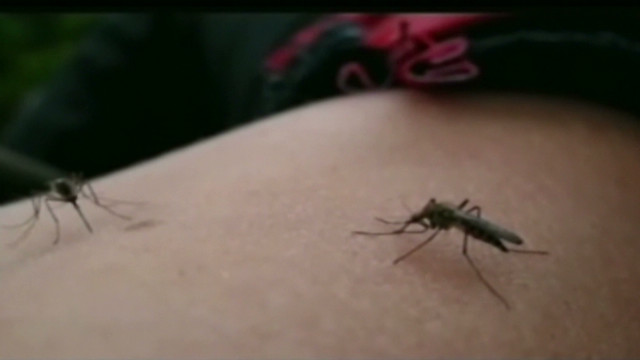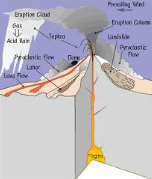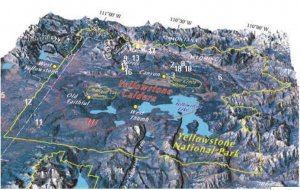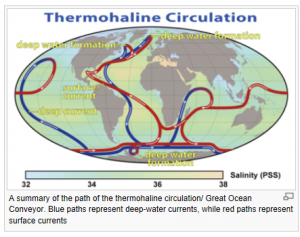Tag Archives: floods
AND MAN SHALL FALL! West Nile cases rising; 66 dead

(CNN) — Sixty-six people have died from West Nile virus infections this year, and the number of human cases has grown to 1,590, the U.S. Centers for Disease Control and Prevention said Wednesday.
That’s the highest case count through the last week of August since the virus was first detected in the United States in 1999.
Nearly half of all the infections have occurred in Texas, where officials said later Wednesday that 894 cases have been reported along with 34 deaths.
“Those numbers are going to go up,” said Dr. David Lakey, commissioner for the Texas Department of State Health Services.
Lakey said it looks like 2012 will be the worst year so far when it comes to West Nile virus cases. In 2003, Texas reported 40 deaths because of the virus, and health officials believe they will surpass that number this year.
All lower 48 states are now reporting West Nile activity, and 43 states have reported at least one person infected with the virus.
More than 70% of all West Nile virus cases in the United States are found in six states: Texas, South Dakota, Mississippi, Oklahoma, Louisiana and Michigan, according to the CDC.
While the CDC said these are the highest number of cases reported by the last week in August since the disease was first recorded in 1999, it’s not the highest number the country has seen. In 2003, the United States had 9,862 reported cases of West Nile virus, and in 2002 there were more than 4,100 cases and 284 fatalities.
In more than half the current nationwide cases, West Nile has led to neuroinvasive disease — serious illnesses like meningitis, encephalitis or virus-associated paralysis. About 10% of these cases can be fatal, according to the CDC, and a high proportion of those who survive can be left with longstanding neurological problems.
Older people are more vulnerable to severe illness from West Nile. So far, the median age among those with neuroinvasive disease this year is 58. In Texas, nearly two-thirds of all cases are in people older than 50.
Health officials do not yet know why there are more cases this year than in recent years.
Based on previous experiences with floods and hurricanes, health officials do not believe Hurricane Isaac will have a major impact on this year’s outbreak.
Mosquitoes that spread the virus breed in small nutrient-rich pools of water, such as the water found in old tires, so a large rainfall event or flooding usually washes out those small pools and eliminates breeding sites, said Dr. Lyle Petersen, who heads the CDC’s Division of Vector-Borne Infections.
But after the water recedes, there’s always the possibility that new small pools of water will form.
Petersen urged the public to take proper precautions to prevent getting sick regardless of whether they live in a state with high or low case counts.
To reduce your risk of exposure to mosquitoes and to prevent their breeding sites:
— Drain all standing water from flower pots, old tires, clogged rain gutters, etc., where mosquitoes breed.
— Use an insect repellant that contains DEET, picaridin or oil of lemon eucalyptus.
— Also wear long sleeves and long pants to protect your skin when you’re outside.
— Stay indoors at dusk and dawn because that’s when mosquitoes are most active.
Doomsday 2012 Fact Sheet
 There is widespread and unnecessary fear of doomsday on December 21, 2012. Some people worry about a Maya prophesy of the end of the world, others fear a variety of astronomical threats such as collision with a rogue planet. Opinion polls suggest that one in ten Americans worry about whether they will survive past Dec 21 of this year, and middle-school teachers everywhere report that many of their students are fearful of a coming apocalypse. Following are brief facts that address these doomsday fears.
There is widespread and unnecessary fear of doomsday on December 21, 2012. Some people worry about a Maya prophesy of the end of the world, others fear a variety of astronomical threats such as collision with a rogue planet. Opinion polls suggest that one in ten Americans worry about whether they will survive past Dec 21 of this year, and middle-school teachers everywhere report that many of their students are fearful of a coming apocalypse. Following are brief facts that address these doomsday fears.
Mayan Calendar: The Maya calendar, which is made up different cycles of day counts, does not end this year. Rather, one cycle of 144,000 days (394 years) ends and the next cycle begins.
Mayan Prophecy: The ancient Maya did not predict the end of the world or any disaster in December 2012. Such doomsday predictions are a modern hoax.
Planet Nibiru: Nibiru is probably the minor name of a god found in ancient Mesopotamian writing. There is no planet named Nibiru, and the fictional books by economist Zecharia Sitchin about a civilization on this planet are a hoax.
Rogue Planet Headed for Earth. For the past decade there have been reports of a rogue object (Planet X, or Nibiru, or Hercubolus, or even Comet Elenin) that will collide with Earth in December 2012. These claims are not true. If such a threatening world existed, it would be one of the brightest objects in the sky, and astronomers would have been tracking it for years. If it existed, its gravity would be distorting the orbits of planets, especially Mars and Earth. Astronomers know that it does not exist.
Planet Alignments: There is no alignment of planets in Dec 2012. There is an approximate lining up of the Earth and Sun and the center of our Galaxy in late December, but this happens every year. In any case, planet alignments have no effect on the Earth.
Pole Shift: There is nothing strange this year about either the magnetic poles or the rotational poles of the Earth. The magnetic polarity changes every million years or so, but that is not happening now, and it probably takes thousands of years when it does happen. A sudden change in the rotational axis has never happened and is not possible. If there were any change in the Earth’s rotation, it would be instantly apparent by failure of our GPS systems.
Increasing Disasters. Our planet is behaving normally in 2012, although we see more and more news stories about natural disasters. There has been no increase in earthquakes or volcanic eruptions. There has been an increase in extreme weather, including both droughts and floods, which are partly attributable to global warming, but this has nothing to do with a 2012 doomsday.
Solar Outbursts: The Sun’s ongoing 11-year activity cycle is expected to peak in 2013, not 2012. Solar outbursts (flares and CMEs) can damage orbiting satellites but will not hurt us on the surface. The strength of the 2013 solar maximum is predicted to be lower than average, not higher.
Bunker Conspiracy: Accusations of a massive government cover-up are nonsense. No government could hide an incoming planet or silence hundreds of thousands of scientists. Rumors that huge bunkers have been built in the U.S. or elsewhere to shelter the elite are lies. Apparently a few people are building private shelters, but their fear of 2012 is misplaced and they are wasting their money.
Scaring Children: The group most vulnerable to doomsday claims is children. Teachers report that many of their students are frightened and some are even considering suicide. This is the most tragic consequence of the 2012 hoax.
The End of the World: The idea of the sudden end of the world by any cause is absurd. The Earth has been here for more than 4 billion years, and it will be several more billion years before the gradual brightening of the Sun makes our planet unlivable. Meanwhile there is no known astronomical or geological threat that could destroy the Earth.
Cosmophobia: Many young people write to me that they are scared of astronomy. When they read about some new discovery, the first thing they think is that it might hurt them, even if it is happening in a distant galaxy. There is no reason for such fears, which I call cosmophobia (fear of the universe). This rash of concern seems to be the result of too many conspiracy theories and sensational stories featured on the Internet and irresponsible news outlets. Astronomical objects are so distant that they cannot threaten the Earth. Please don’t be afraid of the Sun or the planets or comets or asteroids. The universe is not your enemy.
DOOMSDAY 2012 – NATURAL DISASTERS COULD WIPE OUT YOUR ZOMBIE WORRIES
Floods, earthquakes, and volcanic eruptions. These are just a few of the natural disasters that may befall our planet between now and December 21st, 2012. As we speak, the summer solstice is upon us, but it’s the winter solstice that we should be worrying about.
Flooding. There are several different scenarios in which massive floods may overcome our planet. One is oceanic rise. If the oceans rise, the coastal areas of the world will recede, and millions of people living in these areas will either die or have to move further inland. Global warming is currently being blamed for the Greenland ice sheets and polar cap melt off that has been going on for years. I think the majority of people are skeptical of this diagnosis, or just don’t know what to think, as scientists seem to fall on both sides of this debate. What no one can dispute is that this is happening.

If solar flare/sunspot activity on 12/21/2012 should be great enough to gain entrance to our atmosphere on this day, it could accelerate the ice melt and the oceans will rise. If the temperature of the earth’s surface rises just a few degrees, this would also happen. How quickly, obviously no one knows. One thing rapid or even gradual ice melts will do is disrupt the thermohaline circulation of water in the Atlantic Ocean, an ocean-based system of heat delivery sometimes referred to as the North Atlantic thermal conveyor belt.
The northeastern States, eastern Canada and, primarily, Europe enjoy warmer climates than they otherwise would because of the thermohaline circulation. This vast ocean conveyor sweeps warm, salty water from tropical latitudes north along the surface. After shedding heat to the atmosphere, the chilled brine becomes denser and sinks. Thousands of feet beneath the surface it flows back toward the equator, completing the loop.
But as the climate warms disproportionately at the poles, the gears of the system begin to wobble. Freshwater runoff from Greenland’s ice cap and from melting glaciers across the Arctic, combined with increased precipitation, will form a thick, buoyant cap over the North Atlantic. Already, this gigantic vortex may be sputtering. The surface of the North Atlantic is becoming noticeably less salty, and thus less driven to sink.
 Thermohaline circulation shut down as recently as 8200 years ago, and some scientists contend that the Little Ice Age of 1300 to 1850 was due to a hiccup in the system. The chance of another collapse is hotly debated, in scientific circles, and may throw us into another Little Ice Age again.
Thermohaline circulation shut down as recently as 8200 years ago, and some scientists contend that the Little Ice Age of 1300 to 1850 was due to a hiccup in the system. The chance of another collapse is hotly debated, in scientific circles, and may throw us into another Little Ice Age again.
Earthquakes are a distinct possibility, and tectonic shift may occur. Tectonic shift and rise can be a direct result of earthquakes, as well as the weight and motion of melting water, among other things. It may well force the earth’s mantle to rise up and reform our planet.
Volcanic eruptions are a potentially catastrophic event that could be in store for us. The caldera at Yellowstone National Park, the World’s largest volcano, is said by scientists to be overdue for an eruption. This volcano is sometimes referred to as a Super volcano. There are over 3000 recorded earthquakes at Yellowstone National Park each year, and any sort of cataclysmic event on a worldwide scale may be the spark that  forces the caldera to erupt. That eruption, along with any others that may happen on that fateful day, 12/20/2012, would put enough volcanic ash into the atmosphere, as to blot out the sun for years, perhaps even decades. And then there are all the different types of gasses that will also be in the air, and oxygen purity levels will drop dramatically. Without Photosynthesis, a process whereby plants capture the suns energy to split off water’s hydrogen from oxygen. Hydrogen is combined with carbon dioxide to form glucose and release oxygen. If the sun is blotted out and plants can’t grow and capture carbon dioxide, while releasing oxygen, we may lose our ability to breath, among other things. This will also have a devastating effect on the global food chain. In my opinion, this will be the start of a fatal global downward spiral, from which there will be no return.
forces the caldera to erupt. That eruption, along with any others that may happen on that fateful day, 12/20/2012, would put enough volcanic ash into the atmosphere, as to blot out the sun for years, perhaps even decades. And then there are all the different types of gasses that will also be in the air, and oxygen purity levels will drop dramatically. Without Photosynthesis, a process whereby plants capture the suns energy to split off water’s hydrogen from oxygen. Hydrogen is combined with carbon dioxide to form glucose and release oxygen. If the sun is blotted out and plants can’t grow and capture carbon dioxide, while releasing oxygen, we may lose our ability to breath, among other things. This will also have a devastating effect on the global food chain. In my opinion, this will be the start of a fatal global downward spiral, from which there will be no return.
Last but not least. Again, in my opinion, the most probable occurrence will be an eruption of the volcano at Cumbre Vieja. Cumbre Vieja is an active volcanic ridge on the volcanic ocean island of Isla de La Palma in the Canary Islands, Spain. History has recorded volcanic eruptions of the Cumbre Vieja in 1470, 1585, 1646, 1677,m 1712, 1949, and 1971.
 During the 1949 eruption, three vents—Duraznero, San Juan and Hoyo Negro—opened and expelled massive amounts of lava. Also during the eruption two earthquakes happened centered near Jedey. Following the earthquakes a fracture appeared, approximately two miles long, about 1/10 of the exposed length of the Cumbre Vieja. Parts of the western flank of the Cumbre Vieja ridge moved about 1 mile sideways and 2 miles downwards towards the Atlantic Ocean. Scientists have hypothesized that an eruption or even an earthquake would send the western flank of the island sliding into the Atlantic Ocean, creating a Mega Tsunami of biblical proportions. Computer models indicate the resulting gravitational landslide will enter the Atlantic Ocean and create the so called Mega Tsunami, with the initial wave estimated at some 200 feet in height, and a peak to peak height of 1 mile. Estimated speed of the wave is 600 mph. It will reach the African coast in 1 hour, southern england in about 3 to 4 hours, and the eastern seaboard of the United States in about 6 hours. The initial wave will have subsided into a succession of smaller ones each about 100 to 200 feet in height, and may swell to 400 to 600 feet high at a distance of 1 to 2 miles apart, while retaining the original speed. Computer models indicate differing inland inundation measurements, between 15 to 30 miles or more according to the volume of water.
During the 1949 eruption, three vents—Duraznero, San Juan and Hoyo Negro—opened and expelled massive amounts of lava. Also during the eruption two earthquakes happened centered near Jedey. Following the earthquakes a fracture appeared, approximately two miles long, about 1/10 of the exposed length of the Cumbre Vieja. Parts of the western flank of the Cumbre Vieja ridge moved about 1 mile sideways and 2 miles downwards towards the Atlantic Ocean. Scientists have hypothesized that an eruption or even an earthquake would send the western flank of the island sliding into the Atlantic Ocean, creating a Mega Tsunami of biblical proportions. Computer models indicate the resulting gravitational landslide will enter the Atlantic Ocean and create the so called Mega Tsunami, with the initial wave estimated at some 200 feet in height, and a peak to peak height of 1 mile. Estimated speed of the wave is 600 mph. It will reach the African coast in 1 hour, southern england in about 3 to 4 hours, and the eastern seaboard of the United States in about 6 hours. The initial wave will have subsided into a succession of smaller ones each about 100 to 200 feet in height, and may swell to 400 to 600 feet high at a distance of 1 to 2 miles apart, while retaining the original speed. Computer models indicate differing inland inundation measurements, between 15 to 30 miles or more according to the volume of water.
This would greatly damage or destroy cities along the entire North American eastern seaboard, and tens of millions would be killed from Maine to Florida, and everything In between.
So there you have it. Not a pretty picture is it.
Apocalypse NOW! Surviving the Doomsday Polar Shift in an Inland Lifeboat
Because the STATIM pods are modular, you can customize them for your particular nightmare scenario.
First things first. Before worrying about food storage or access to clean water during a major disaster, you need to make sure you get through the first wave safely. But never fear: When the next big tsunami hits, a water-ready modular bunker called the STATIM pod aims to float you above the flooding.
Invented by Miguel Serrano, President at Brahman Industries, the STATIM (Storm, Tornado And Tsunami Interconnected Modules) pods are designed to withstand the awesome power of tsunamis, while giving survivors a fighting chance in the aftermath.
Brahman Industries calls the pods “inland lifeboats.” The reason: they’re buoyant and self-righting, so when the floods come, they will bob to the surface. They’re also low-tech, easy to maintain, and easy to construct, which means there’s a possibility for wide deployment. The company’s plan is to install and anchor them in flood-prone areas so when the alarm bells ring, those most at risk can rush to the safety of the pods. Inside, up to 50 people can cling to secure seating arrangements.
It’s the end of the world, but this guy is feeling fine.
The biggest issue with rescue-shelter design is always cost. We already know how to make structures that can withstand natural disasters; it’s just incredibly expensive. The key to keeping costs down is using concrete, a cheap and well-understood building material. “We’re addressing a high-priority need with a low tech approach,” says Serrano. When STATIM reaches scale, Serrano aims to offer the 50-person pod at around $1,800 a head.
The tubular hull is made from a series of pre-cast concrete modules. The modules can be created at local factories, shipped separately, and then aligned and winched together on site to create a watertight seal. “Everyone knows how to do this,” says Serrano. According to the company, the assembly process for the pre-cast parts requires about the same amount of knowledge as installing a drain system.
A STATIM pod waits to be assembled.
The pod continues to serve the people inside long after the first wave of disaster. “After Katrina, they spent three weeks just rescuing people with helicopters,” Serrano says. Because the pods are buoyant and equipped with communications devices, rescuers will be able to easily meet up with the pods to tow them away. A boat or helicopter can transport 50 people at a time to safety.
And because the parts are modular, the pods are customizable. By including different segments equipped with all kinds of survival gear, your personal STATIM pod can be modded to your anticipated needs.
The next step, says Serrano, is creating pods that house critical infrastructure. The company has proposed a variation on STATIM called the Genset, which houses working generators. Having survivable power sources would have prevented the Fukushima meltdown, Serrano says, by providing power to the nuclear plant’s critical systems after the tsunami. Other variations include pods with desalination facilities and a version of the pod that can withstand an EMP blast, ensuring that critical electronics would survive a nuclear strike.
The eerily calm diagrammatic disaster illustration. Not pictured: STATIM occupants bracing before nature’s fury.
While the intention of the STATIM system is that they be temporary shelters, let’s indulge ourselves in a little bit of design fiction for a moment. What about the pod’s potential to facilitate long-term living in environmentally extreme places?
As the seas rise and cities fall, imagine a community of these built and arranged in new flood zones, perhaps for scientists seeking to learn about new littoral urban ecosystems or salvagers prospecting for the remaining treasures of a lost civilization. Every night, the tribe would return to their STATIM homes, sleeping soundly with the confident knowledge that when the next flood happens, everyone will be all right.
As an area becomes picked over, helicopter scouts are dispatched to the horizon to find new fields of discovery. When a suitable destination is discovered, the helicopters return, towing the community to their coordinates. In this way, the group slowly makes their way along America’s flooded coastline, passing by long lost levies and through once thriving port towns. Thanks to an accompanying desalination pod, the group can remain operational away from freshwater for a long, long time.
Back in the present, Brahmin’s disaster-related design pulled in seed funding earlier this year. Serrano says that they anticipate the first demonstration units will be available in early 2014. In the meantime, keep watching the horizon.
An exploded view shows how the modules of a STATIM pod are assembled.
Images courtesy of Brahman Industries.




